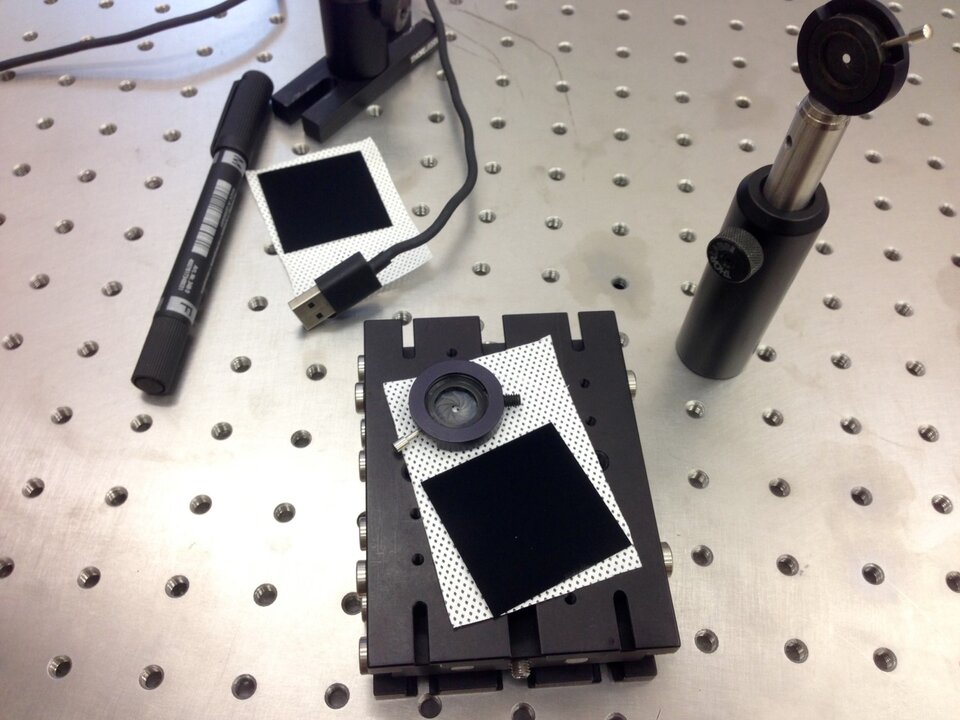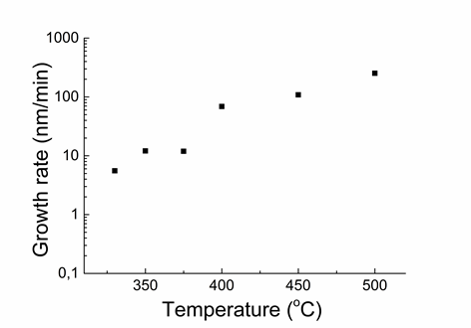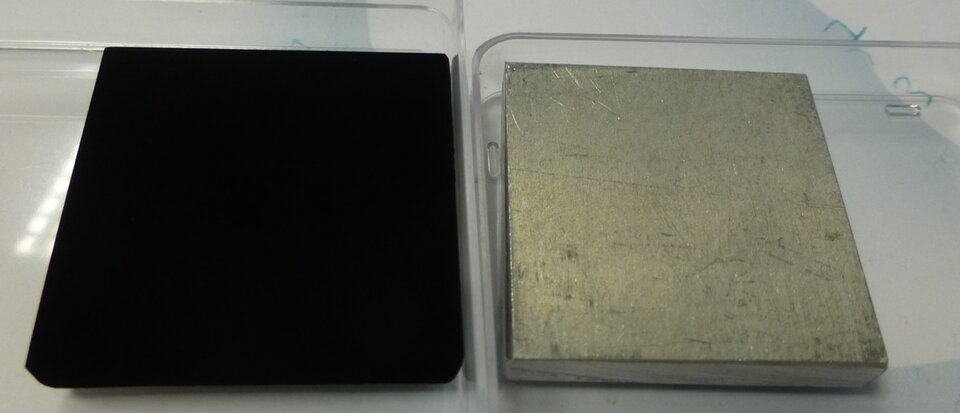Innovative materials for super black low-weight/low-cost baffles
| Programme: | TRP Workplan | Achieved TRL: | 3 |
| Reference: | T116-302MM | Closure: | 2016 |
| Contractor(s): | Luxembourg Institute of Science and Technology (LU), Materia Nova (BE), Thales Alenia Space (FR) | ||
Optical observation requires low stray light levels which can be achieved through efficient black coating applied on all mechanical surfaces close to the optical beam. Today’s black coating solutions (black paints or anodization for ex.) can be expensive, induce contamination and are difficult to apply on complex mechanical parts (vanes, edges…).

Objectives
Develop and test on samples a black coating technology that can be a cost-effective alternative to existing high-performance black coatings.
Achievements
Within this work, two black coatings technologies have been developed and tested at sample level for optical performance (Total Hemispherical Reflectance) and space environmental conditions (thermal cycling, outgassing, hygrometry,…) on various substrate materials (Aluminium, Titanium, Carbon Fiber Reinforced Polymers, and kapton).

The investigated Chemical Vapour Deposition solution corresponds to Carbon NanoTube (CNT)-containing nanocomposite coatings, whereas the Sol-Gel solution involves Carbon Black (CB)-containing nanocomposite coatings. Both solutions bring an added value to the already existing black coatings used for space applications (paints, anodization).
Benefits
Both solutions bring a significant improvement to the already existing black coatings used for space applications (paints, anodization) either in terms of optical performance or ease of application (use for complex structures – sharp edges, ease of use for large scale structures).

Further work
Extended for six months to investigate alternate solution analysis not studied in the frame of this TRP but identified as promising during this study.


